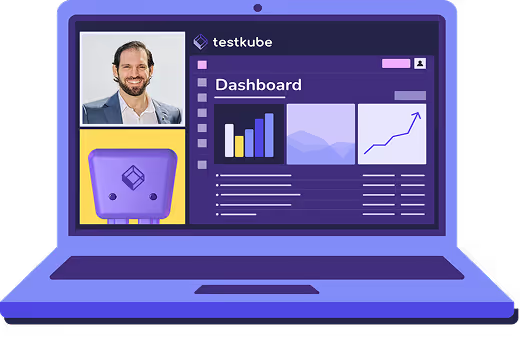Table of Contents
What Does Software for Testing Mean?
Software for testing includes a wide range of tools designed to evaluate and validate software quality throughout the development lifecycle. These tools may focus on automation, performance, APIs, UI, or AI-assisted testing.
Common categories include:
- Test management tools (e.g., TestRail, Zephyr, SpiraTest) for planning and tracking tests.
- Automation testing tools (e.g., Selenium, Cypress, Appium, Postman, Katalon Studio) for automating functional and regression tests.
- AI-powered testing tools (e.g., TestRigor, Rainforest QA, Autify) for using natural language and machine learning to optimize test creation and maintenance.
- Performance and load testing tools (e.g., Apache JMeter, k6, BlazeMeter) for measuring scalability and system behavior under stress.
Together, these tools help development and QA teams ensure that applications meet business and performance requirements before release.
Why It Matters
Testing software is essential for maintaining application quality, reducing deployment risk, and accelerating release velocity. Without proper testing infrastructure, even automated tools become bottlenecks—tests take longer, fail inconsistently, and become difficult to scale across teams or environments.
Effective testing software enables:
- Faster feedback loops through automation.
- Continuous validation across builds and environments.
- Early defect detection before production.
- Reliable performance and security under real-world conditions.
How It Works
Testing software automates validation tasks that were traditionally manual. These tools simulate user actions, send API calls, or apply load to systems to verify correct behavior.
In modern CI/CD pipelines, tests are triggered automatically after each code commit, with results feeding back to developers and QA teams. Increasingly, AI and infrastructure-aware platforms (like Testkube) extend this automation into Kubernetes clusters, enabling distributed, scalable, and consistent testing across environments.
Real-World Examples
- Selenium automates browser testing for web apps.
- Cypress simplifies front-end and integration testing for JavaScript applications.
- Postman automates API test suites and monitors endpoints.
- JMeter and k6 perform performance and load testing.
- Rainforest QA and Autify use AI to generate and maintain tests automatically.
- Testkube unifies all of these under a single control plane inside Kubernetes.
Key Benefits
- Streamlined automation across multiple testing frameworks.
- Centralized management of tests and results.
- Reduced flakiness through environment parity.
- Scalable, cloud-native execution across clusters.
- Enhanced visibility and governance of test infrastructure.
How It Relates to Testkube
Traditional testing tools focus on specific layers (UI, API, performance) but operate in isolation. Testkube connects them.
- Unified orchestration: Testkube runs any containerized testing framework—Cypress, Postman, k6, JMeter—inside Kubernetes.
- Decoupled from CI/CD: Instead of overloading pipelines, Testkube executes tests directly within clusters or via its control plane.
- Environment consistency: The same tests can run locally, in staging, or across multiple clusters with identical configurations.
- AI and automation ready: Through integrations like the MCP Server, AI agents can create, run, and optimize Testkube workflows autonomously.
- Cost-efficient scaling: Teams reuse their existing infrastructure instead of relying on external cloud test grids like Sauce Labs or BlazeMeter.
In short, Testkube doesn’t necessarily replace existing testing software; it makes all of it work together seamlessly in a Kubernetes-native way.
Best Practices
- Select tools based on testing goals (UI, API, performance, security).
- Integrate your testing software with CI/CD or orchestration platforms.
- Use infrastructure-as-code principles for reproducible environments.
- Adopt containerized execution to ensure consistency across teams.
- Centralize test results for observability and trend analysis.
Common Pitfalls
- Running tests in siloed environments that produce inconsistent results.
- Over-reliance on CI/CD for test execution instead of decoupled workflows.
- Lacking visibility into cross-tool results and test health.
- Ignoring test scalability and resource management in Kubernetes.
- Failing to maintain tests as applications evolve.
Frequently Asked Questions (FAQs)
What is the purpose of software testing tools?
They automate and standardize the process of validating software functionality, performance, and security.
Is Testkube itself a testing tool?
Not exactly, it’s a continuous testing platform that orchestrates existing testing tools inside Kubernetes.
Do I need Kubernetes to use Testkube?
You can start locally using Kind, Minikube, or Testkube Cloud without needing production-level Kubernetes access.
How does Testkube differ from tools like Selenium or JMeter?
Selenium or JMeter run specific test types; Testkube orchestrates, scales, and reports on those tests across environments.
Can Testkube run AI-based tests?
Yes. Through its MCP Server integration, AI agents can create and run Testkube workflows autonomously for AI-generated code validation.
What kinds of tests can Testkube orchestrate?
Any containerized test framework—Cypress, Postman, Playwright, k6, JMeter, Robot Framework, etc.


